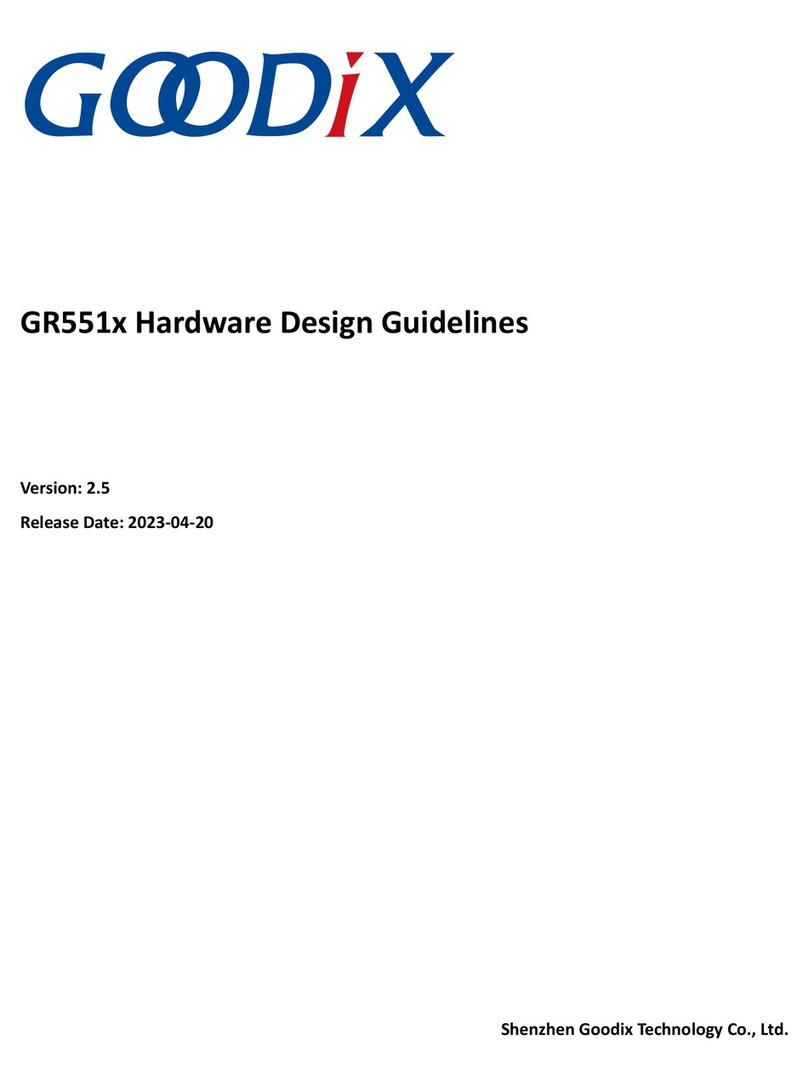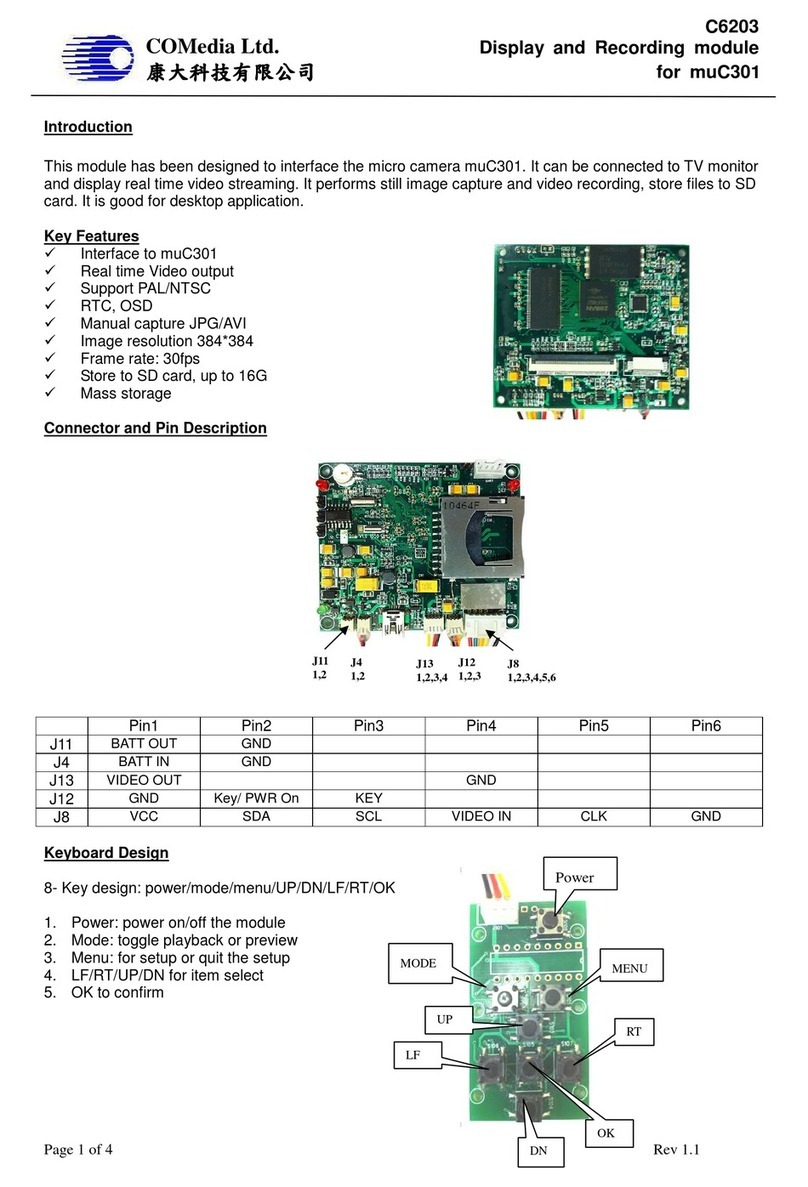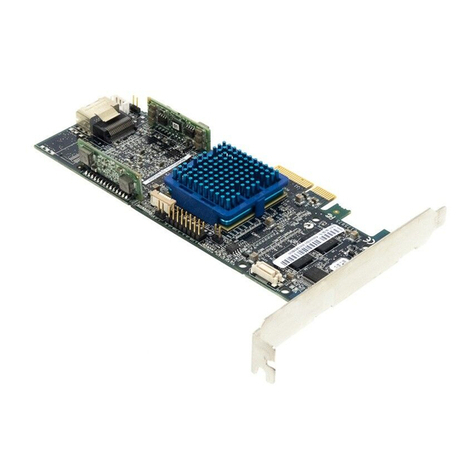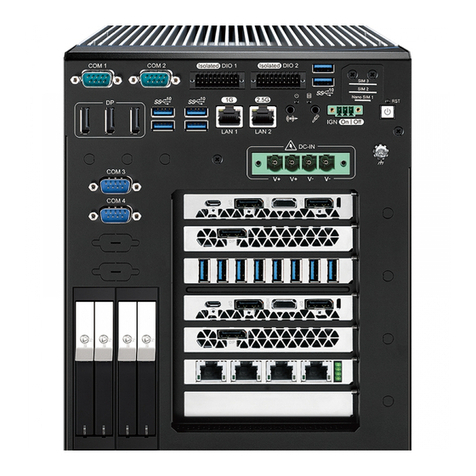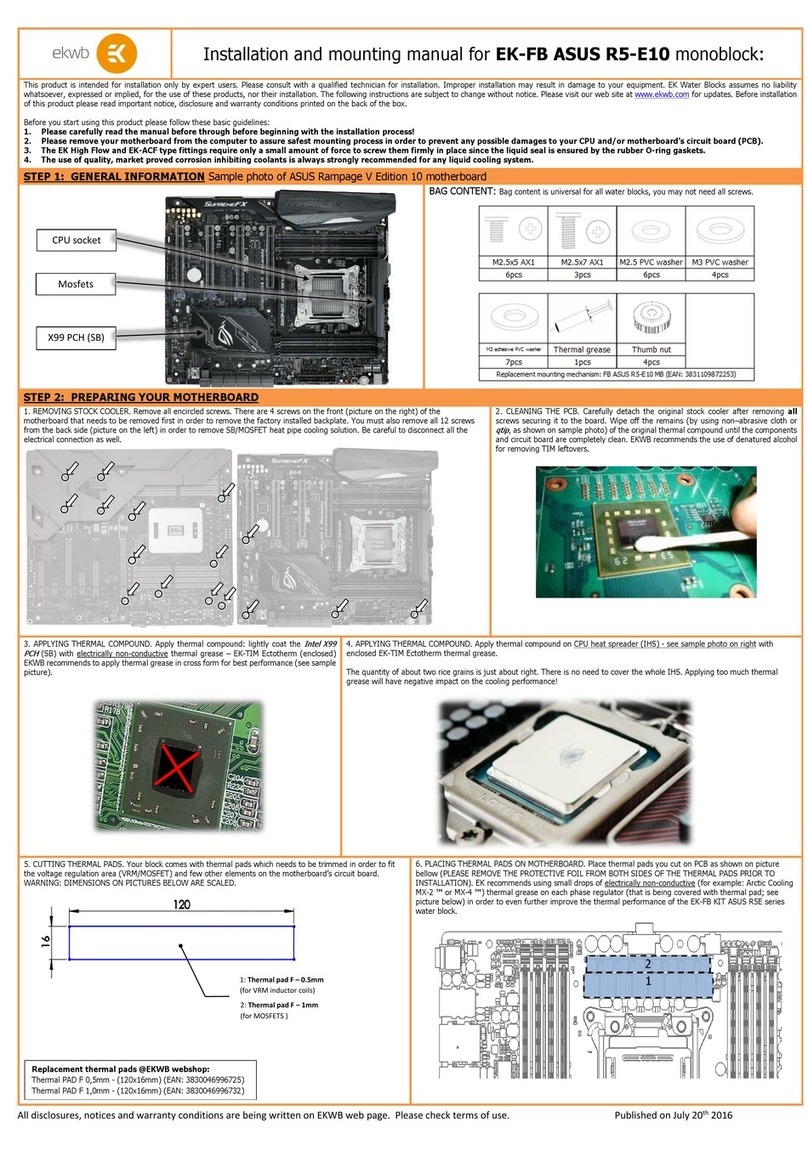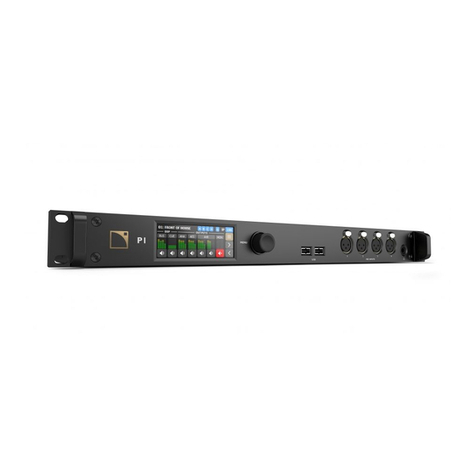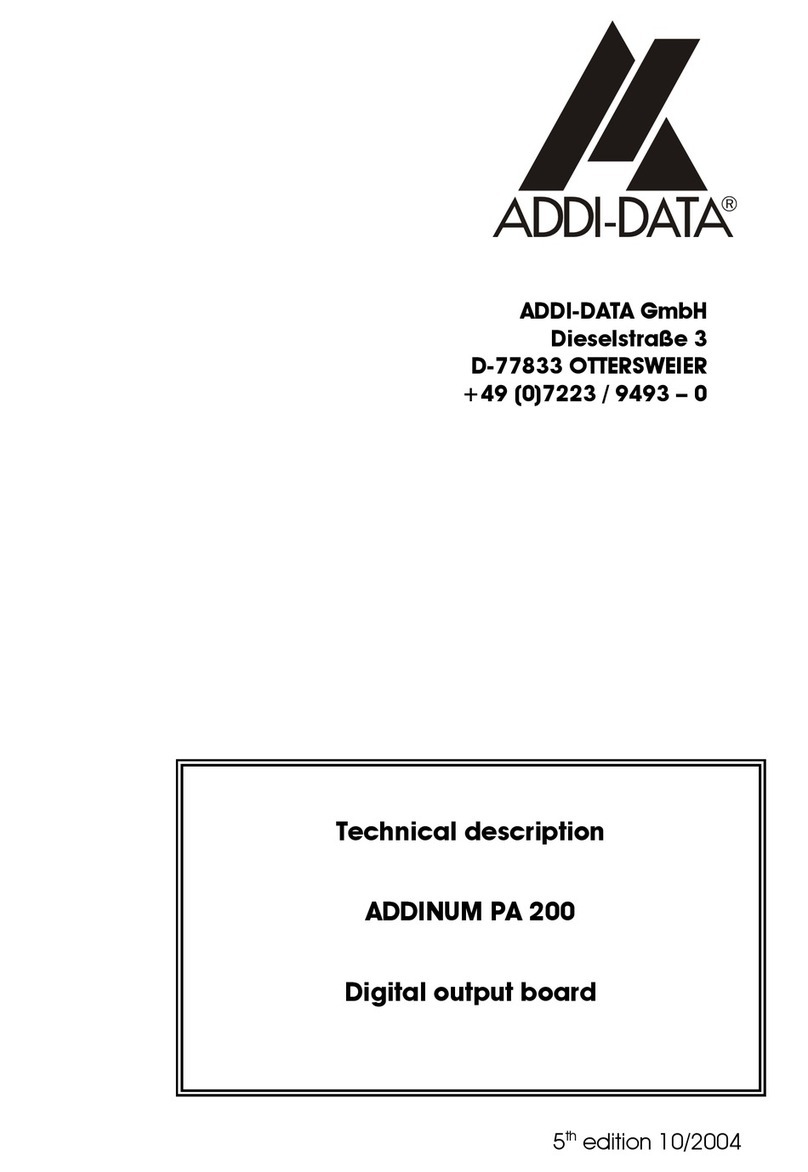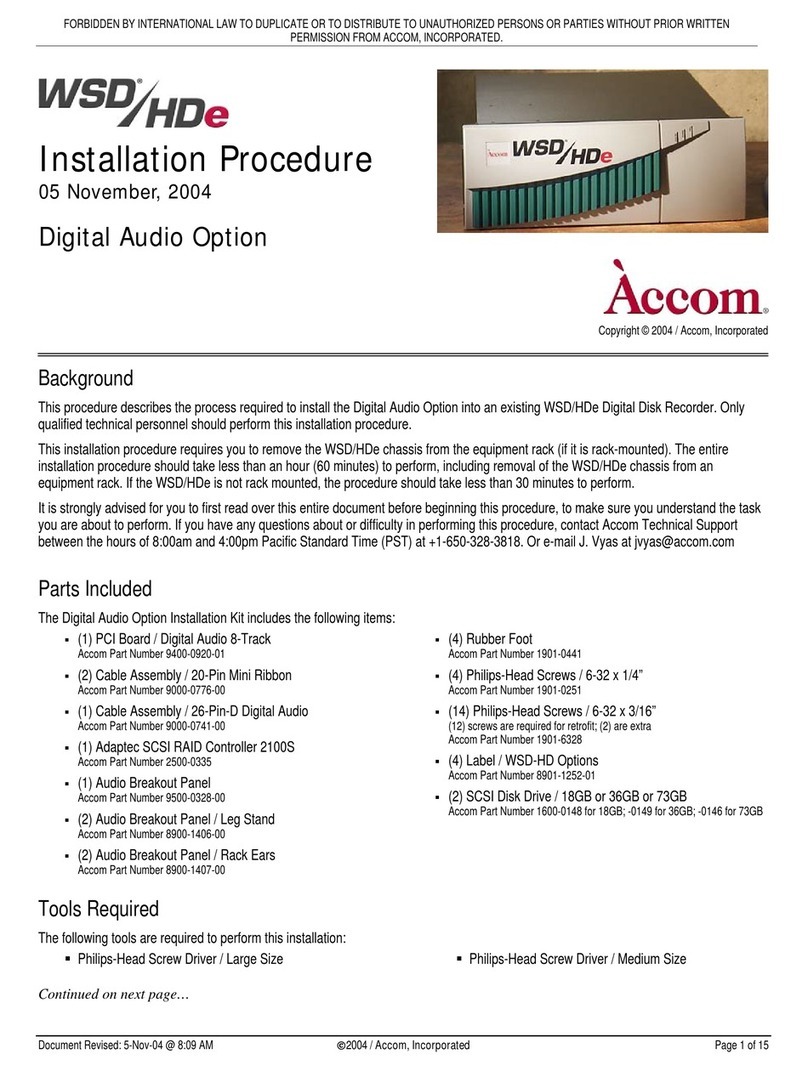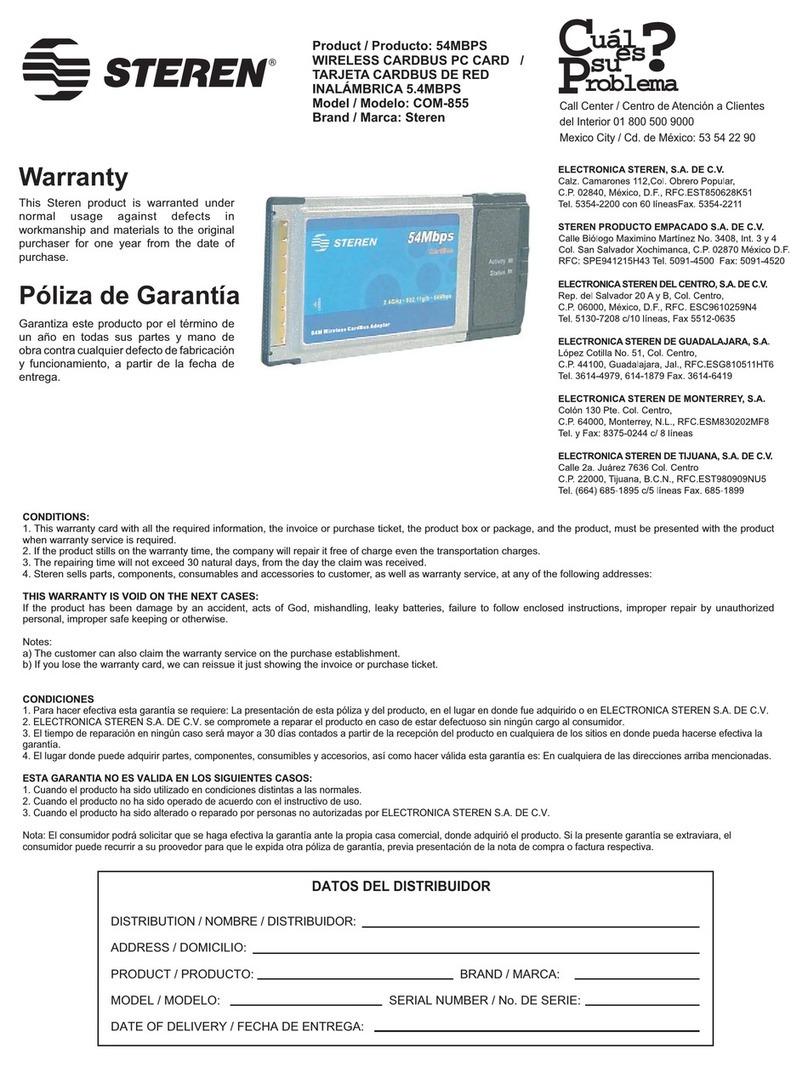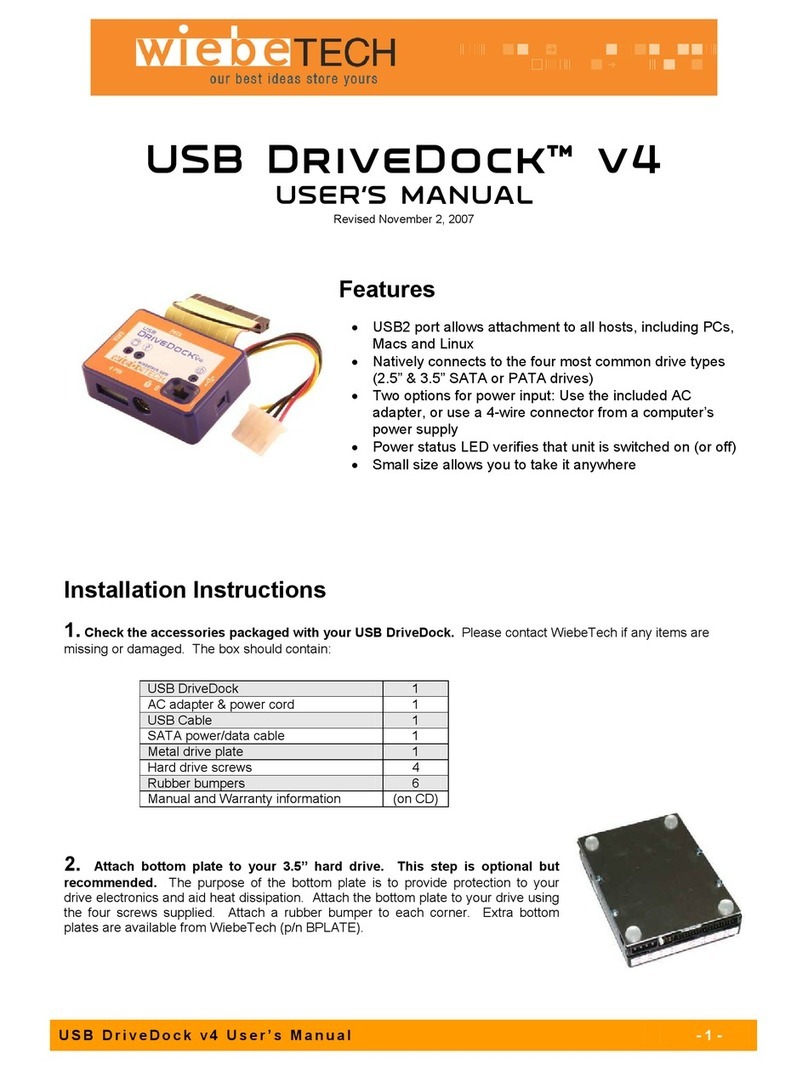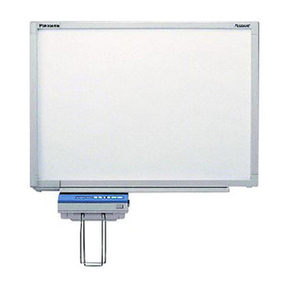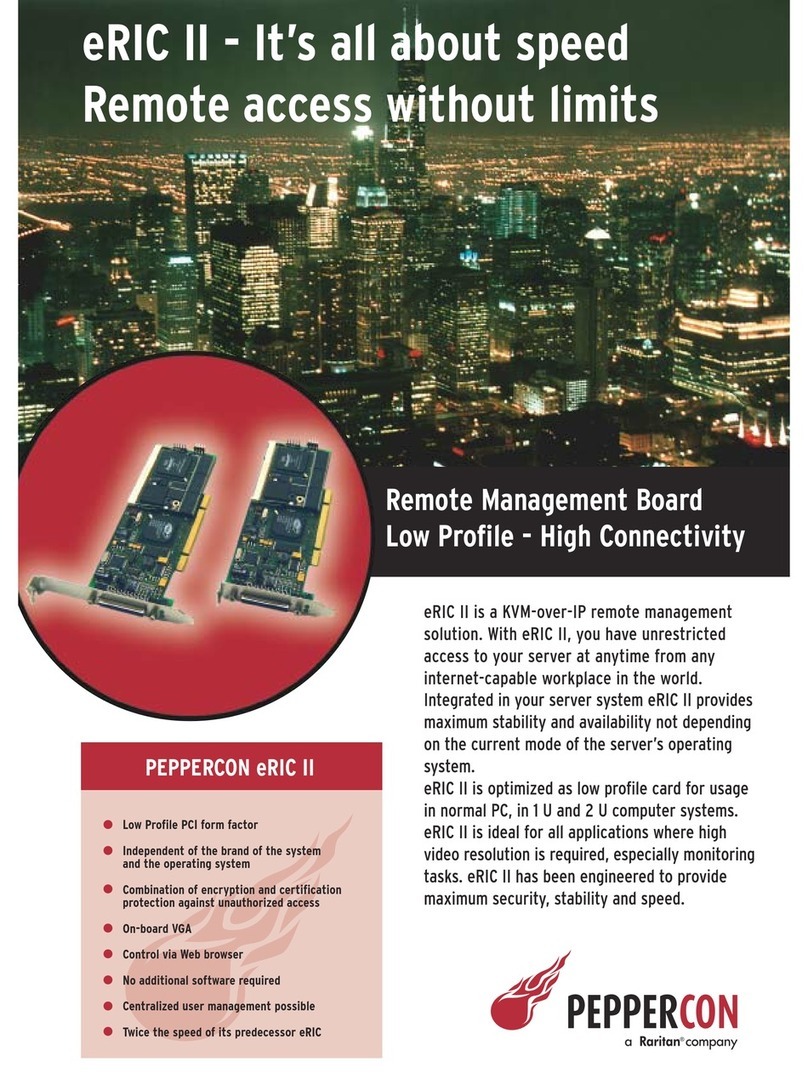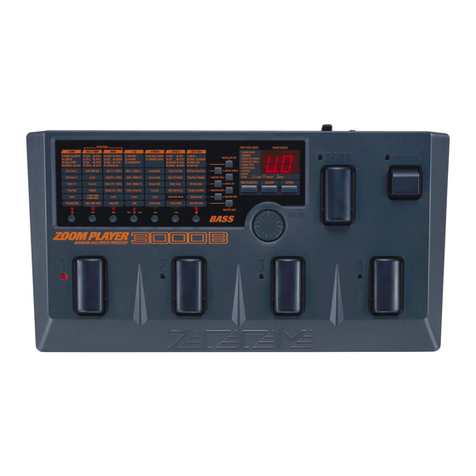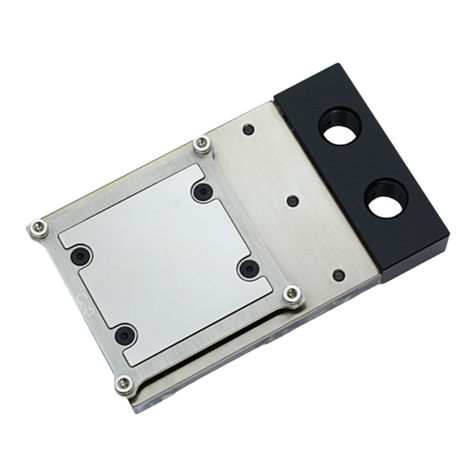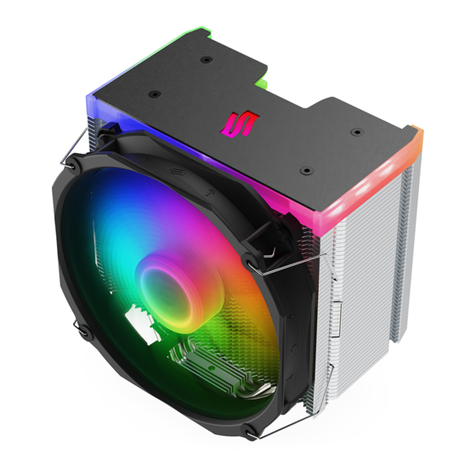Goodix GT911 Operating instructions

GOODIX CONFIDENTIAL
Reproduction and/or distribution of this document in whole or in part is strictly prohibited without written consent of GOODIX.
1
GT911 Programming Guide
(Applicable to firmware of version 1040 or later)
====== Disclaimer ======
The information concerning the device and the like in this publication is intended for you only and is subject
to change without prior notice. It is your responsibility to ensure its application complies with technical
specifications. Shenzhen Huiding Technology Co., Ltd. (hereafter referred to as “GOODIX”) makes no
representation or guarantee for this information, either expressed or implied, written or verbal, statutory or
otherwise including but not limited to representation or guarantee for its application, quality, performance,
merchantability or fitness for a particular purpose. GOODIX shall assume no responsibility for this
information and relevant consequences arising out of the use of such information. Without written consent of
GOODIX, it is prohibited to use GOODIX products as critical components in any life support system. This
document conveys no licenses, implicitly or otherwise, to any intellectual property rights belonging to
GOODIX.

GOODIX CONFIDENTIAL
Reproduction and/or distribution of this document in whole or in part is strictly prohibited without written consent of GOODIX.
2
Contents
1. Description on Interface.......................................................................................................................................... 3
2. Communication Timings......................................................................................................................................... 3
2.1 Timing for Write Operation........................................................................................................................... 3
2.2 Timing for Read Operation ........................................................................................................................... 4
3. Register Map ........................................................................................................................................................... 4
3.1 Real-time Command (Write only)................................................................................................................. 4
3.2 Configuration Information (R/W) ................................................................................................................. 5
3.3 Coordinate Information............................................................................................................................... 13
3.4 Command Status Registers of GT911 ......................................................................................................... 17
3.5 Hotknot Status Registers ............................................................................................................................. 19
3.6 HotKnot Transmit Buffer ............................................................................................................................ 21
3.7 Hotknot Receive Buffer .............................................................................................................................. 22
4. Power-on Initialization and Modification on Register Value ................................................................................ 23
4.1 Power-On Timing of GT911 ....................................................................................................................... 23
4.2 I2C Address Selection during Power-on or Reset Process........................................................................... 24
4.3 Send Configuration after Power-on............................................................................................................. 25
4.4 Register Value Modification........................................................................................................................ 25
5. Coordinates Reading ............................................................................................................................................. 25
6. Operation Modes Switchover............................................................................................................................ 27
6.1 Operation Modes ......................................................................................................................................... 27
a) Normal Mode ............................................................................................................................................ 27
b) Green( Low Power) Mode......................................................................................................................... 27
c) Gesture Mode ............................................................................................................................................ 28
d) Sleep Mode and Wakeup ........................................................................................................................... 28
e) Approach Mode......................................................................................................................................... 29
f) Receive Mode............................................................................................................................................ 29
g) Send Mode ................................................................................................................................................ 29
7. Host System Driver Modification in Gesture Mode.......................................................................................... 30
7.1 Enter Gesture Mode after Screen-off........................................................................................................... 30
7.2 Enter Sleep Mode after Screen-off .............................................................................................................. 30
7.3 Press Power (or Home) Key to Wake up Host ............................................................................................ 30
7.4 Recommended to Apply in Conjunction with IR ........................................................................................ 30
7.5 Hardware Circuit Modification ................................................................................................................... 30
8. Reading Coordinate in Gesture Mode............................................................................................................... 31
9. Time Limit for Downloading HotKnot Firmware............................................................................................. 31
10. Revision History................................................................................................................................................ 31

GOODIX CONFIDENTIAL
Reproduction and/or distribution of this document in whole or in part is strictly prohibited without written consent of GOODIX.
3
1. Description on Interface
GT911 interfaces with the host via 6 pins: VDD, GND, SCL, SDA, INT and RESET.
The INT pin of the host can be rising/falling-edge Triggered. In addition, when INT is in input state, the host
should set INT to be floating, with no internal pull-up or pull-down; the host controls the RESET pin of the GT911
by outputting high or low level. To ensure reliable reset, it is recommended that RESET pin outputs low for longer
than 100μs.
GT911 communicates with the host via standard I2C interface, with a maximum transmission rate of 400K bps.
When the host communicates at rates exceeding 200K bps, it is required to pay special attention to the resistance of
the external pull-up resistor of I2C interface to ensure the edges of SCL and SDA are steep enough. GT911
invariably serves as slave device in communication and its I2C device address consists of 7 device address bits and
1 Read/Write control bit. The high 7 bits are device address while bit 0 is Read/Write control bit. GT911 supports
two slave device addresses which are shown below:
7 bit address 8 bit write address 8 bit read address
BBx0ABx0D5x0
92x082x041x0
Upon each power-on or reset, it is required to select I2C address using INT pin. For specific configuration
method, please refer to section 4.1 and section 4.2.
2. Communication Timings
2.1 Timing for Write Operation
S: Start condition.
Address_W: slave device address with Write control bit.
ACK: Acknowledgement signal.
Register_H, Register_L: 16-bit register address from which Write Operation starts
Data_1 to Data_n: Data bytes 1-n.
E: Stop condition.
After setting the starting register address for Write operation, it is allowed to write one or more bytes at a
time. GT911 will automatically increase the address of register and store the data bytes in sequence.

GOODIX CONFIDENTIAL
Reproduction and/or distribution of this document in whole or in part is strictly prohibited without written consent of GOODIX.
4
2.2 Timing for Read Operation
First, set register address from which Read Operation starts based on the aforesaid Wirte Operation timing
sequence. Then, resend start condition to perform Read addressing and read register data.
Address_R: Slave device address with Read control bit.
NACK: Host issues NACK after reading the last byte.
After setting read operation register addresses, the host can read one or more than one byte at a time. GT911
will automatically increase register address and send subsequent data in sequence.
The stop condition (the first E signal as shown in the above diagram) after setting read operation register
address is optional. However, the start condition to restart I2C communication has to be resent.
3. Register Map
3.1 Real-time command (Write only)
Addr Name bit7 bit6 bit5 bit4 bit3 bit2 bit1 bit0
0x8040 Command
0: Read coordinates status; 1: Read diff data or raw data; 2: Read diff data or raw data;
3: Reference capacitance update (Internal test); 4: Reference capacitance calibration
(Internal test); 5: Screen off;
6: Enter Charge mode; 7: Exit Charge mode
8 : Gesture mode.
0x20: Enter HotKnot Slave Approach mode
0x21:Enter HotKnot Master Approach mode
0x22:Enter Receive mode
0x28:Exit Slave Approach mode
0x29:Exit Master Approach mode
0x2A:Exit Receive mode
0xAA: ESD protection mechanism enabled; driver writes 0xAA to 0x8040 and reads
and checks the value of 0x8040 regularly; other values are invalid.
0x8041 ESD_Check ESD protection mechanism enabled; reset to 0 upon initialization; after that, driver
writes 0xAA to 0x8040 and reads and checks the value of 0x8040 regularly.
0x8046 Command_Check For commands greater than 0x07, it is required to write the command to 0x8046 before
writing to 0x8040, to improve anti-ESD capability.

GOODIX CONFIDENTIAL
Reproduction and/or distribution of this document in whole or in part is strictly prohibited without written consent of GOODIX.
5
3.2 Configuration information (R/W)
Register Config Data bit7 bit6 bit5 bit4 bit3 bit2 bit1 bit0
0x8047 Config_
Version
The version number of configuration documents ( configuration parameters will be updated only
when the version number of the new release is later than that of the previous one, or equal to that of
the previous one but there are changes in contents; documents are numbered sequentially from 'A' to
'Z'; Send 0x00 and the version number is reset to ‘A’)
0x8048 X Output Max
(Low Byte) Resolution of X axis
0x8049 X Output Max
(High Byte)
0x804A Y Output Max
(Low Byte) Resolution of Y axis
0x804B Y Output Max
(High Byte)
0x804C Touch Number Reserved Touch points supported: 1 to 5
0x804D Module_
Switch1
Driver_
Resersal
(Y2Y)
Sensor_
Resersal
(X2X)
Stretch_rank
X2Y
(X,Y
axis
switch-ov
er)
Sito
(Software
noise
reduction)
INT triggering mechanism
00: rising edge
01: falling edge
02: Low level
03: High level
0x804E Module_
switch2 Reserved FirstFilte
r_Dis Reserved
Approch_
En
HotKnot
_En
Touch_
Key
0x804F Shake_Count De-jitter frequency when touch is being released De-jitter frequency when touch is pressing down
0x8050 Filter First_Filter Normal_Filter (Filter threshold for original coordinates, coefficient is 4)
0x8051 Large_Touch Number of large-area touch points
0x8052 Noise_
Reduction
Reserved Noise reduction value (0-15 valid, coefficient is 1)
0x8053 Screen_
Touch_Level Threshold for touch to be detected
0x8054 Screen_
Leave_Level Threshold for touch to be released
0x8055 Low_Power_
Control Reserved Interval to enter lower power consumption mode (0s
to 15s)
0x8056 Refresh_Rate Pulse width setting for gesture wakeup Coordinates report rate (period: 5+N ms)
0x8057 x_threshold X coordinate output threshold: 0-255 (Based on the last reported coordinates; If configured to 0, GT911 will
keep outputting coordinates continuously)
0x8058 y_threshold Y coordinate output threshold: 0-255 (Based on the last reported coordinates. If configured to 0, GT911 will keep
outputting coordinates continuously)
0x8059 X_Speed_Limit Reserved
0x805A Y_Speed_Limit

GOODIX CONFIDENTIAL
Reproduction and/or distribution of this document in whole or in part is strictly prohibited without written consent of GOODIX.
6
0x805B Space Space of border top (coefficient: 32) Space of border bottom (coefficient: 32)
0x805C Space of border left (coefficient: 32) Space of border right (coefficient: 32)
0x805D Mini_Filter Reserved Mini filter configuration during line drawing process,
configured as 0 indicates 4
0x805E Stretch_R0 coefficient of Stretch space 1
0x805F Stretch_R1 coefficient of Stretch space 2
0x8060 Stretch_R2 coefficient of Stretch space 3
0x8061 Stretch_RM The base of multiple stretch spaces
0x8062 Drv_GroupA_
Num All_Driving Reserved Driver_Group_A_number
0x8063 Drv_GroupB_
Num Reserved Dual_Fr
eq Driver_Group_B_number
0x8064 Sensor_Num Sensor_Group_B_Number Sensor_Group_A_Number
0x8065 FreqA_factor Clock Multiplier Factor of drive frequency of Driver Group A
GroupA_Frequence = Clock Multiplier Factor * Fundamental Frequency
0x8066 FreqB_factor Clock Multiplier Factor of drive frequency of Driver Group B
GroupB_Frequence = Clock Multiplier Factor * Fundamental Frequency
0x8067 Pannel_
BitFreqL Fundamental Frequency of Driver Groups A and B (1526HZ< Fundamental Frequency <14600Hz)
0x8068 Pannel_
BitFreqH
0x8069 Pannel_Sensor_
TimeL Output Interval between two adjacent drive signals (unit: us); Reserved ( used in beta version; invalid
in a Release)
0x806A Pannel_Sensor_
TimeH
0x806B Pannel_Tx_
Gain Reserved
Pannel_Drv_output_
R
4 gain values,
configurable
Pannel_DAC_Gain
0: Gain max.
7: Gain min.
0x806C Pannel_Rx_
Gain
Pannel_PG
A_C
Pannel_PGA_R Pannel_Rx_Vcmi
(4 gain values,
configurable)
Pannel_PGA_Gain
(8 gain values, configurable)
0x806D Pannel_Dump_
Shift
Amplification factor of raw data in Gesture Mode
(2N)
Amplification factor of raw data on the touch
panel (2N)
0x806E Drv_Frame_
Control
Reserved SubFrame_DrvNum (maximum setting is 17) Repeat_Num
(Accumulated sampling
count)
0x806F Charging_Level_U
p
After the host issues Charge command, IC enters Charge mode and raises the Touch_Level and
Leave_Level. The level applicable to Charge mode= original level+configuration level. When
configuration level is 0, the charging level equals to the original level.

GOODIX CONFIDENTIAL
Reproduction and/or distribution of this document in whole or in part is strictly prohibited without written consent of GOODIX.
7
0x8070 Module_
Switch3 Reserved
Gesture_
Hop_
Dis
Strong_S
mooth Reserved Shape_En
0x8071 GESTURE_DIS Valid distance for slide-up/down wakeup Valid distance for slide-left/right wakeup
0x8072 Gesture_Long_
Press_Time The gesture recognizing processing aborting time period when long touching
0x8073 X/Y_Slope_Adjust
The adjustment parameter of X direction slope
when using “four point trigonometric
approximation algorithm” to calculate the
coordinates (0: algorithm disabled )
The adjustment parameter of Y direction slope
when using “four point trigonometric
approximation algorithm” to calculate the
coordinates (0: algorithm disabled )
0x8074 Gesture_Control Invalid time for double-tap wakeup (unit:100
ms, defaults to 1.5s when configured as 0)
GestureDrv_PGA_Gain (8 gain values,
configurable)
0x8075 Gesture_Switch1 Swipe left Swipe up Swipe
right w o m e c
0x8076 Gesture_Switch2
Swipe is
valid only
at the
bottom of
the TP
z s ^ > V
Double-ta
p
Swipe
down
0x8077 Gesture_Refresh_R
ate
Report rate in Gesture mode (period is 5+ms)
0x8078 Gesture_Touch_
Level Touch threshold in Gesture mode
0x8079 NewGreenWake
UpLevel
Threshold for NewGreen wakeup of Gesture wakeup function
0x807A Freq_Hopping_Star
t
Start frequency for frequency hopping( when Range_Ext=0,the unit is 2KHz,for example, 50
indicates100KHz;
When Range_Ext=1,the unit is BitFreq)
0x807B Freq_Hopping_End
End frequency for frequency hopping( when Range_Ext=0,the unit is 2KHz,for example, 150
indicates 300KHz;
when Range_Ext=1,the unit is BitFreq )
0x807C Noise_Detect_Time
s
Detect_Stay_Times
(Number of tests taken on each
frequency point in each noise
test; 2 is recommended)
Detect_Confirm_Times
(Confirmed noise level after repeated noise tests, 1-63 valid; 20 is
recommended)
0x807D Hopping_Flag Hopping_E
n
Range_
Ext
Dis_Fo
rce_Ref Delay_Hopping
Detect_Time_Out
(timeout for noise detection,
unit: second), Reserved
0x807E Hopping_
Threshold
Fast_Hopping_Limit: fast hopping is enabled only when
the interference value of current frequency is greater than
Fast_Hopping_Limit*4. The minimum setting of this limit
is 5.
Hopping_Hit_Threshold
(Conditions for selecting optimal
frequency: Current operating frequency
interference- Minimum interference>Set

GOODIX CONFIDENTIAL
Reproduction and/or distribution of this document in whole or in part is strictly prohibited without written consent of GOODIX.
8
valuex4, then optimal frequency is
selected and frequency hopping is
enabled)
0x807F Noise_
Threshold
Threshold to distinguish if there is interference (if the interference on all frequency point is less than
this threshold, it is regarded as no interference), Reserved
0x8080 Noise_Min_Thresh
old
When ESD causes the minimum interference point to be greater than the threshold value, it will initiate fast
reduction treatment. Configured to 0 means this function is disabled and configured to high value (such as 200 or
higher) has the equivalent effect. To enable this function, it is recommended to set the value 5 to 20 higher than
the minimum frequency point (LCD interference and common-mode interference, whichever is greater) in
normal interference.
0x8081 NC Reserved
0x8082 Hopping_Sensor_G
roup Sections for Hopping Frequency Noise Detection (4 sections recommended)
0x8083 Hopping_seg1_Nor
malize Seg1 Normalize coefficient ( sampling value *N / 128= Raw data)
0x8084 Hopping_seg1_Fact
or Seg1 Central point Factor
0x8085 Main_Clock_Ajdus
t Fine adjustment of IC main clock Frequency, within the range of -7 to +8
0x8086 Hopping_seg2_Nor
malize Seg2 Normalize coefficient (sampling value *N / 128= Raw data)
0x8087 Hopping_seg2_Fact
or Seg2 Central point Factor
0x8088 NC Reserved
0x8089 Hopping_seg3_Nor
malize Seg3 Normalize coefficient (sampling value *N / 128= Raw data)
0x808A Hopping_seg3_Fact
or Seg3 Central point Factor
0x808B NC Reserved
0x808C Hopping_seg4_Nor
malize Seg4 Normalize coefficient (sampling value *N / 128= Raw data)
0x808D Hopping_seg4_Fact
or Seg4 Central point Factor
0x808E NC Reserved
0x808F Hopping_seg5_Nor
malize Seg5 Normalize coefficient (sampling value *N / 128= Raw data)
0x8090 Hopping_seg5_Fact
or Seg5 Central point Factor
0x8091 NC Reserved
0x8092 Hopping_seg6_Nor
malize Seg6 Normalize coefficient (sampling value *N / 128= Raw data)
0x8093 Key 1 Key 1 address: 0-255 valid

GOODIX CONFIDENTIAL
Reproduction and/or distribution of this document in whole or in part is strictly prohibited without written consent of GOODIX.
9
(0 indicates no key is available. When the addresses of all four keys are the multiples of 8, it means
independent key design manner. )
0x8094 Key 2
Key 2 address: 0-255 valid
(0 indicates no key is available. When the address of all four keys is the multiples of 8, it means
independent key design manner)
0x8095 Key 3
Key 3 address: 0-255 valid
(0 indicates no key is available. When the address of all four keys is the multiples of 8, it means
independent key design manner)
0x8096 Key 4
Key 4 address: 0-255 valid
(0 indicates no key is available. When the address of all four keys is the multiples of 8, it means
independent key design manner)
0x8097 Key_Area
Time limit for long-press update (1s to 15s).
Long-press update is disabled when configured
to 0.
Key active area configuration (single side): 0-15 valid
0x8098 Key_Touch_Level Touch key touch threshold
0x8099 Key_Leave_Level Touch key release threshold
0x809A Key_Sens KeySens_1(sensitivity coefficient of Key 1) KeySens_2 (sensitivity coefficient of Key 2)
0x809B Key_Sens KeySens_3(sensitivity coefficient of Key 3) KeySens_4 (sensitivity coefficient of Key 4)
0x809C Key_Restrain
The key restrain interval after finger leaves
screen (unit: 100ms), 0 means the key
suppression interval is 600ms.
Independent adjacent key restrain parameter
0x809D Key_Restrain_
Time Reserved
Adjacent key restrain time internal after the finger
slides to leave at the bottom of the TP (unit: 100
ms). Timing starts from the moment that finger
leaves the TP. If there is touch key event within
this time interval, the touch key will be restrained
until the touch key is released and touched down
again. (configured as 0, this function is disabled)
0x809E GESTURE_
LARGE_TOUCH
Large-area touch processing in Gesture mode (the size of the touch rectangle). Configured as 0, this
function is disabled.
0x809F NC Reserved
0x80A0 NC Reserved
0x80A1 Hotknot_Noise_
Map Reserved 200K 250K 300K 350K 400K 450K
0x80A2 Link_Threshold Link_NoiseThreshold
0x80A3 Pxy_Threshold Pxy_NoiseThreshold
0x80A4 GHot_Dump_
Shift Reserved Rx_Self Amplification factor of raw Data (2N)
0x80A5 GHot_Rx_Gain PGA_C PGA_R Reserved PGA_Gain (8 levels to be
configured)
0x80A6 Freq_Gain0 400K signal gain calibration, calibration volume
is N/16. Invalid when N=0.
450K signal gain calibration, calibration volume
is N/16. Invalid when N=0.

GOODIX CONFIDENTIAL
Reproduction and/or distribution of this document in whole or in part is strictly prohibited without written consent of GOODIX.
10
0x80A7 Freq_Gain1 300K signal gain calibration, calibration volume
is N/16. Invalid when N=0.
350K signal gain calibration, calibration volume
is N/16. Invalid when N=0.
0x80A8 Freq_Gain2 200K signal gain calibration, calibration volume
is N/16. Invalid when N=0.
250K signal gain calibration, calibration volume
is N/16. Invalid when N=0.
0x80A9 Freq_Gain3 Reserved 150K signal gain calibration, calibration volume
is N/16. Invalid when N=0.
0x80AA NC Reserved
0x80AB NC Reserved
0x80AC NC Reserved
0x80AD NC Reserved
0x80AE NC Reserved
0x80AF NC Reserved
0x80B0 NC Reserved
0x80B1 NC Reserved
0x80B2 NC Reserved
0x80B3 Combine_Dis Distance for adjacent rectangles to be combined
in Gesture mode Distance for adjacent rectangles to be combined
0x80B4 Split_Set Distance for a large-area rectangle to be split Distance for a normal-size rectangle to be split
0x80B5 NC Reserved
0x80B6 NC Reserved
0x80B7
to
0x80C4
Sensor_CH0 to
Sensor_CH13 Channel number on chip corresponding to ITO Sensor
0x80C5
to
0x80D4
NC Reserved
0x80D5
to
0x80EE
Driver_CH0 to
Driver_CH25 Channel number on chip corresponding to ITO Driver
0x80EF
to
0x80FE
NC Reserved
0x80FF Config_Chksum
Configuration verification (checksum value of the bytes from 0x8047 to 0x80FE)
0x8100 Config_Fresh Configuration updated flag (the flag is written by the host)
Supplementary description on some registers:
[0x804D] Module_Switch1
Bit7:Driver_Resersal(Y2Y), configured as 1 indicates Y axis reversal.
Bit6:Sensor_Resersal(X2X), configured as 1 indicates X axis reversal.

GOODIX CONFIDENTIAL
Reproduction and/or distribution of this document in whole or in part is strictly prohibited without written consent of GOODIX.
11
Bit5-bit4:Stretch_rank, stretching method
00,01,02:Weak stretch 0.4P
03:User-defined stretch
[0x804E] Module_Switch2
Bit5: FirstFilter_Dis, enlarge the first de-bouncing value. 0: enabled; 1: disabled.
Bit2:Approch_En,hotknot proximity sensing on/off.
Bit1:Approch_En,hotknot function on/off.
[0x8056] Refresh_Rate
Bit7~Bit4: pulse width setting for Gesture wakeup, unit: 250us. Configured as “f” indicates INT should be
driven high if the host does not succeed in reading the data.
[0x805B-0x805C] Space
Configuration of the reported area, which is used to adjust the reported borders when the ITO exceeds the
viewing area, 0-15 configurable(indicates cutting N×32 original coordinates)where as 0 indicates no cutting. The
maximum cutting area is 15×32=480 original coordinates(one Pitch consists of 512 original coordinates,if the
cutting exceeds one Pitch, it is allowed to subtract one Pitch from the configuration.)
[0x8070] Module_Switch3
Bit6:Gesture_Hop_Dis, whether to disable the frequency hopping function in Gesture Mode. Default setting
is 0: enabled; configured to 1: disabled.
Bit5:Strong_Smooth:5-stage moving average smoothing, default setting is 0 (disabled). It is recommended
not to enable this function unless the pitch is comparatively large and linearity is poor.
Bit0:Shape_En:Deformation processing, configured as 1: enabled; reset to 0: disabled.
[0x8071] GESTURE_DIS
Bit7~4:valid distance setting for swipe-up/down wakeup. The minimum valid swipe distance is the N/16 of
the TP length. Configured to 0 indicates 8.
Bit3~0:valid distance setting for swipe-left/right wakeup. The minimum valid swipe distance is the N/16 of
the TP length. Configured to 0 indicates 8.
[0x807C] Noise_Detect_Times
Bit7~6: Detect_Stay_Times, Number of tests taken on each frequency point in each noise test; recommended
setting is 2.

GOODIX CONFIDENTIAL
Reproduction and/or distribution of this document in whole or in part is strictly prohibited without written consent of GOODIX.
12
Bit5~0: Detect_Confirm_Times, Confirmed noise level after repeated noise tests, recommended setting is
15~20.
[0x807D] Hopping_Flag
Bit7: Hopping_En, frequency hopping enable bit (1: enabled, 0: disabled).
Bit6: Range_Ext, frequency hopping range extension flag. For V1040, please configure to 1.
Bit5: Dis_Force_Ref, configured to 0: update the baseline compulsively after frequency hopping; configured
to 1: do not update the baseline compulsively after frequency hopping.
Bit4: Delay_Hopping, configured to 1: frequency hopping occurs after finger touch leaves; this bit configured
to 0 or Dis_Force_Ref configured to 1: Delay_Hopping is disabled.
Bit3~0: Detect_Time_Out,timeout for noise detection, unit: s.
[0x807E] Hoppging_Threshold
Bit3~0: Hopping_Hit_Threshold,condition for optical frequency selection; when the interference of the current
operating frequency -the minimum interference >set value x4,then the optical frequency is selected and frequency
hopping is enabled.
[0x809A-0x809B] Key_Sens
The sensitivity coefficient configuration of 4 independent touch keys, can be configured to 0 ~15 (16 grades
in total). Higher grade indicates higher sensitivity. This is valid only for independent touch keys, which is to avoid
sensitivity inconsistency between touch keys arising out of the nodal capacitance deviation during the independent
touch key design process.
[0x809C] Key_Restrain
Bit3~0: Adjacent key restrain parameter. When the second largest value is greater than the largest value
Key_Restrain/16, no touch key is reported. Recommended setting is 7±2.
[0x80A2] Data_Threshold
HotKnot technology uses frequency to indicate data. Two hotknot terminals perform data transmission by
issuing signals of specified frequency. Data_Threshold is a threshold to distinguish whether there is signal or not.
When LCD is turned off and no signal is present, the white noise received by HotKnot terminal is within 5. It is
recommended that the Data_Threshold be greater than 5 and no less than 10.
[0x80A3] Pxy_Threshold
If the HotKnot proximity sensing function is enabled when LCD is on, employ differential method to filter

GOODIX CONFIDENTIAL
Reproduction and/or distribution of this document in whole or in part is strictly prohibited without written consent of GOODIX.
13
interference. The threshold is differencial threshold. When the noise changes greatly, configure the differential
threshold to a larger value. The threshold can be adjusted according to the touching area and distance of two
hotknot terminals. It is suggested that this threshold be greater than 15 and 20 is highly recommended.
[0x80A4] Dump_Shift
The Dump_Shift is applicable to the amplification of HotKnot raw data. Normal configuration is 2~4.
[0x80A5] Rx_Gain
The Rx_Gain is applicable to the receiving hardware configuration of HotKnot. The mechanism is the same as that
of configuration of TP Rx_Gain.
[0x80A6-0x80A9] Freq_Gain0~3
Software gain coefficient of HotKnot signals. The 7 frequencies used by HotKnot are ranged from 150KHz to
450KHz,one step is 50KHz。Adjust the software gain value according to the actual sampled raw data of frequency
points to improve the data consistency between frequency points and minimize the signal diversity between
different frequencies.
[0x80B3] Combine_Dis
Bit7~4: Distance for adjacent rectangles to be combined in Gesture mode, 0 to 15 configurable; the distance
for adjacent touch points to be combined is calculated as: sqrt (2*(Combin_Dis)) pitch. For backward compatibility,
being configured to 0 means the distance for adjacent touch points to be combined is 2 pitches.
Bit3~0: Distance for adjacent rectangles to be combined, 0 to 15 configurable; the distance for adjacent touch
points to be combined is calculated as: sqrt (2*(Combin_Dis)) pitch. For backward compatibility, being configured
as 0 means the distance for adjacent touch points to be combined is 2 pitches.
[0x80B4] Split_Set
Bit7~4: Distance for a large-area rectangle to be split, 0 to 15 configurable; distance for a large-area touch
point to be split is calculated as: sqrt(2*(Split_Set)) pitch. For backward compatibility, being configured as 0
means defaulting as previous setting, and the distance for an adjacent touch point to be split is sqrt (12) pitch.
Bit3~0: Distance for a normal-size rectangle to be split, 0 to 15 configurable; distance for a normal-size touch
point to be split is calculated as: sqrt (2*(Split_Set)) pitch. For backward compatibility, being configured as 0
means defaulting as previous setting, and the distance for a normal-size touch point to be split is sqrt (7) pitch.
3.3 Coordinate information
Addr Access bit7 bit6 bit5 bit4 bit3 bit2 bit1 bit0

GOODIX CONFIDENTIAL
Reproduction and/or distribution of this document in whole or in part is strictly prohibited without written consent of GOODIX.
14
0x8140 R Product ID ( first byte,ASCII )
0x8141 R Product ID ( second byte,ASCII )
0x8142 R Product ID ( third byte,ASCII )
0x8143 R Product ID ( forth byte,ASCII )
0x8144 R Firmware version ( HEX. low byte )
0x8145 R Firmware version ( HEX. high byte )
0x8146 R x coordinate resolution ( low byte )
0x8147 R x coordinate resolution ( high byte )
0x8148 R y coordinate resolution ( low byte )
0x8149 R y coordinate resolution ( high byte )
0x814A R Vendor_id ( ID of the current module )
0x814B R Reserved
0x814C R Reserved
0x814D R Reserved
0x814E R/W buffer status large detect Proximity
Valid HaveKey number of touch points
0x814F R track id is 32, indicates the signal is proximity sensing signal
0x8150 R PxyOk Reserved
0x8151 R PxyOk Reserved
0x8152 R Reserved
0x8153 R Reserved
0x8154 R Reserved
0x8155 R Reserved
0x8156 R Reserved
0x8157 R track id
0x8158 R point 1 x coordinate (low byte)
0x8159 R point 1 x coordinate (high byte)
0x815A R point 1 y coordinate (low byte)
0x815B R point 1 y coordinate (high byte)
0x815C R Point 1 size (low byte)
0x815D R point 1 size (high byte)
0x815E R Reserved
0x815F R track id
0x8160 R point 2 x coordinate (low byte)
0x8161 R point 2 x coordinate (high byte)
0x8162 R point 2 y coordinate (low byte)
0x8163 R point 2 y coordinate (high byte)
0x8164 R point 2 size (low byte)
0x8165 R point 2 size (high byte)
0x8166 R Reserved
0x8167 R track id

GOODIX CONFIDENTIAL
Reproduction and/or distribution of this document in whole or in part is strictly prohibited without written consent of GOODIX.
15
0x8168 R point 3 x coordinate (low byte)
0x8169 R point 3 x coordinate (high byte)
0x816A R point 3 y coordinate (low byte)
0x816B R point 3 y coordinate (high byte)
0x816C R point 3 size (low byte)
0x816D R point 3 size (high byte)
0x816E R Reserved
0x816F R track id
0x8170 R point 4 x coordinate (low byte)
0x8171 R point 4 x coordinate (high byte)
0x8172 R point 4 y coordinate (low byte)
0x8173 R point 4 y coordinate (high byte)
0x8174 R point 4 size (low byte)
0x8175 R point 4 size (high byte)
0x8176 R Reserved
0x8177 R track id
0x8178 R point 5 x coordinate (low byte)
0x8179 R point 5 x coordinate (high byte)
0x817A R point 5 y coordinate (low byte)
0x817B R point 5 y coordinate (high byte)
0x817C R point 5 size (low byte)
0x817D R point 5 size (high byte)
0x817E R Reserved
0x817F R KeyValue
Supplementary description on some registers:
[0x814A] Vendor_id
The ID of the current module is codetermined by pins sensor_opt1 and sensor_opt2 on the circuit. When the
two pins are connected to different level status, there comes in 6 sensor IDs as shown below:
sensor_opt1 sensor_opt2 Vendor_id
GND GND 0
VDDIO GND 1
NC GND 2
GND 300K 3
VDDIO 300K 4
NC 300K 5
[0x814E]:
Bit7: Buffer status, 1 = coordinate (or key) is ready for host to read; 0 = coordinate (or key) is not ready and
data is not valid. After reading coordinates, host should configure this flag (or the entire byte) to 0 via I2C.

GOODIX CONFIDENTIAL
Reproduction and/or distribution of this document in whole or in part is strictly prohibited without written consent of GOODIX.
16
Bit6: large detect, 1 indicates there is large-area touch on TP.
Bit4: HaveKey, 1 : Have touch key; 0 : No touch key (released).
Bit3~0: Number of touch points.
[0x814F]
When HotKnot proximity sensing function is enabled and another HotKnot-featured terminal is detected,
GT911 will report the detection result to the host in coordinates. Therefore, the Number of touch points will
add 1. The track id of the added touch point is fixed to 32, and Pxyos is set to 1. Please note that the address of
the added touch point is fixed to the address of the first coordinate.
[0x8177]: KeyValue
The address of KeyValue is not fixed. Instead, it stays behind valid coordinates. For example, 0x817F is the
address of the key when there are 5 coordinates on TP. However, if there are 4 coordinates on TP, the address of the
key will be 0x8177.
(Gesture Features: share the addresses with the coordinate information)
Addr Access bit7 bit6 bit5 bit4 bit3 bit2 bit1 bit0
0x8140 R Gesture ID ( first Byte,ASCII G)
0x8141 R Gesture ID ( second Byte,ASCII E)
0x8142 R Gesture ID ( third Byte,ASCII S)
0x8143 R Gesture ID ( forth Byte,ASCII T)
0x8144 R Gesture Firmware version ( HEX.low byte )
0x8145 R Gesture Firmware version ( HEX.high byte )
0x8146 R x coordinate resolution ( low byte )
0x8147 R x coordinate resolution ( high byte )
0x8148 R y coordinate resolution ( low byte )
0x8149 R y coordinate resolution ( high byte )
0x814A R Reserved
0x814B R/W
Gesture types(character ASCII indicates 0x21-0x7F),swipe right(0xAA),swipe left(0xBB),
swipe down(0xAB),swipe up(0xBA),double-tap(0xCC), double-tap on touch key (0xCC,
key value is stored at coordinate address)
0x814C R The number of gesture touch point(coordinates stored at 0x9420)
0x814D R Gesture start point x coordinate(low byte)
0x814E R Gesture start point x coordinate(high byte)
0x814F R Gesture start point y coordinate(low byte)
0x8150 R Gesture start point y coordinate(high byte)
0x8151 R Gesture end point x coordinate(low byte)

GOODIX CONFIDENTIAL
Reproduction and/or distribution of this document in whole or in part is strictly prohibited without written consent of GOODIX.
17
0x8152 R Gesture end point x coordinate(high byte)
0x8153 R Gesture end point y coordinate(low byte)
0x8154 R Gesture end point y coordinate(high byte)
0x8155 R Gesture Width(low byte)
0x8156 R Gesture Width(high byte)
0x8157 R Gesture Height(low byte)
0x8158 R Gesture Height(high byte)
0x8159 R Gesture Mid X coor(low byte)
0x815A R Gesture Mid X coor(high byte)
0x815B R Gesture Mid Y coor(low byte)
0x815C R Gesture Mid Y coor(high byte)
0x815D R Gesture P1 X coor(low byte)
0x815E R Gesture P1 X coor(high byte)
0x815F R Gesture P1 Y coor(low byte)
0x8160 R Gesture P1 Y coor(high byte)
0x8161 R Gesture P2 X coor(low byte)
0x8162 R Gesture P2 X coor(high byte)
0x8163 R Gesture P2 Y coor(low byte)
0x8164 R Gesture P2 Y coor(high byte)
0x8165 R Gesture P3 X coor(low byte)
0x8166 R Gesture P3 X coor(high byte)
0x8167 R Gesture P3 Y coor(low byte)
0x8168 R Gesture P3 Y coor(high byte)
0x8169 R Gesture P4 X coor(low byte)
0x816A R Gesture P4 X coor(high byte)
0x816B R Gesture P4 Y coor(low byte)
0x816C R Gesture P4 Y coor(high byte)
(Gesture coordinate information)
Addr Access bit7 bit6 bit5 bit4 bit3 bit2 bit1 bit0
0x9420 R Gesture point 1 x coordinate(low byte)
0x9421 R Gesture point 1 x coordinate(high byte)
0x9422 R Gesture point 1 y coordinate(low byte)
0x9423 R Gesture point 1 y coordinate(high byte)
0x9424~
0x951F R Gesture point 2~64 coordinate(the number of coordinate is the value of 0x814C)
3.4 Command status registers of GT911
Addr Access bit7 bit6 bit5 bit4 bit3 bit2 bit1 bit0
0x81A8 R GT911_Status:0x00:touch detection mode;0x88:slave approach mode;
0x99:master approach mode;0xAA:Receive mode;

GOODIX CONFIDENTIAL
Reproduction and/or distribution of this document in whole or in part is strictly prohibited without written consent of GOODIX.
18
0xBB:Send mode, indicates the Transmit Buffer is flushed correctly.
0x 81A9 R GT911_Status_Bak:GT911_Status backup
[0x81A8] GT911_Status
0x00:indicates GT911 will only perform touch detection, no HotKnot-relevant operations implemented.
0x88:When HotKnot proximity sensing function is enabled, the host sends command 0X20 to enable
GT911 to enter slave approach mode (works as receiving terminal). In this mode, hotkont proximity sensing
and touch detection alternate. When successfully detect the transmitting terminal, GT911 will report the
detection result to the host in coordinates (track id is 32). The host can issue command 0X28 to enable GT911
to exit slave approach mode.
0x99:When HotKnot proximity sensing function is enabled, the host sends command 0X21 to enable
GT911 to enter master approach mode. In this mode, hotkont proximity sensing and touch detection alternate.
When successfully detect the slave/receiving terminal, GT911 will report the detection result to the host in
coordinates (track id is 32). The host can issue command 0X29 to enable GT911 to exit master approach
mode.
0xAA:When GT911 successfully detect another hotknot-featured terminal, the host downloads and
sends the hotknot transmission firmware to GT911. When the firmware operates, GT911 enters Receive
mode by default. In this mode, GT911 will not implement any operation related to touch detection, and it
will keep detecting data from the transmitting terminal. Once a data frame is received, GT911 will notify the
host to process the data via INT.
0xBB:When GT911 successfully detect another hotknot-featured terminal, the host downloads and sends
the hotknot transmission firmware to GT911. When the firmware operates, GT911 enters Receive mode by
default. In this mode, when the Transmit Buffer is flushed correctly, GT911 switches to Send mode. When the
data in the Transmit Buffer is transmitted successfully, GT911 will notify the host to process the data via INT.
When data processing is completed, GT911 switches to Receive mode and perform Leave Detection, until the
Transmit Buffer is correctly flushed again.
When GT911 is implementing hotknot-related operations, the host can distinguish whether the
previously-issued command is transmitted successfully and whether resending is needed, or decide which
hotknot command to be sent by querying GT911_Status.

GOODIX CONFIDENTIAL
Reproduction and/or distribution of this document in whole or in part is strictly prohibited without written consent of GOODIX.
19
[0x81A9] GT911_Status_Bak
Backup of GT911_Status. It is suggested that the host reads the GT911_Status and GT911_Status_Bak
simultaneously. Only when these two values are the same, can the status be considered valid, thus reducing
the interference to I2C bus which causes data errors.
3.5 Hotknot status registers
Addr Access bit7 bit6 bit5 bit4 bit3 bit2 bit1 bit0
0xAB10 R SendStatus: Send status register
0xAB11 R RevStatus: Receive status register
0xAB12 R SendStatusBak: Send status register backup
0xAB13 R RevStatusBak: Receive status register backup
… R NC (11 bytes reserved)
0xAB1F R/W
When there is work needs to be handled by the host, GT911 will write
0xAA to this address and notify the host to handle the work via INT. After
the work is finished, the host sends another command other than 0xAA.
And GT911 will implement the command. Otherwise, it will wait for 2.5s.
Supplementary description on some registers:
The data read from this area is valid only when GT911 operates in Receive Mode or Send Mode, that is
to say, only when GT911_Status is 0xAA or 0xBB.
[0xAB10] SendStatus
This register indicates the Send status in Send Mode.
0x01: indicates GT911 is in idle state. When a data frame is transmitted successfully and there is no
data needs to be sent, GT911 will automatically switch to Receive Mode and perform Leave Detection. The
host sends the outgoing data to the hotknot Transmit Buffer in this state.
0x02: indicates GT911 is transmitting data. The host cannot modify the data in the Transmit Buffer in
this state.
0x03: all data in Transmit Buffer is transmitted successfully. GT911 notifies the host to process the data
via INT. After reading the status, the host writes a number other than 0xAA to 0xAB1F, then GT911 will
automatically switch to idle state and enter Receive Mode and perform Leave Detection.
0x04: The data sent by the host to the Transmit Buffer fails to pass the verification (incorrect or byte
length does not match). GT911 notifies the host to handle via INT. After reading the status, the host writes a
number other than 0xAA to 0xAB1F, and then resends the previously-issued data again.

GOODIX CONFIDENTIAL
Reproduction and/or distribution of this document in whole or in part is strictly prohibited without written consent of GOODIX.
20
0x05: GT911 has finished transmitting a data frame but the transmission fails. Instead of notifying the
host via INT, GT911 will resend the data frame automatically.
Please note that, if the transmission is unsuccessful, GT911 will not stop resending until the data is transmitted
successfully. Therefore, the Send Failure status needs to be defined as “timeout setting of the host” or “Leave
Detection”.
0x07: GT911 has detected that the receiving terminal has left. After the host capturing this status, GT911 may
exit Send mode. When transmitting a data frame successfully, GT911will enable Leave detection. GT911 can
distinguish whether the receiving terminal exists or not by detecting the feedback signal on the frequency
sweep signal sequence. If no feedback signal is detected for 1s, it is regarded that the receiving terminal has
left.
[0xAB11] RevStatus
This register indicates the Receive status in Receive Mode.
0x01: indicates GT911 is in idle state. It is detecting data from the transmitting terminal but no valid
signal has been detected yet.
0x02: indicates GT911 has detected the start signal and is receiving data.
0x03: indicates GT911 has received a data frame successfully and has sent it to the Receive Buffer.
GT911 will notify the host to process the data via INT. After reading the data in Receive Buffer, the host
has to write a number other than AA to 0xAB1F.
0x04: indicates GT911 has received a data frame but does not pass the CRC16 verification. Instead of
notifying the host to handle via INT, GT911 will automatically detect the start signal again.
Please note that if the CRC verification fails or an overlong void signal is received, it will not stop
detecting the start signal until the data frame is received successfully. Therefore, Receive Failure should be
implemented by the host through timeout setting.
0x07:GT911 detected that the transmitting terminal has left. After the host capturing this status, GT911 may
exit receive mode. When receiving a data frame successfully, GT911 will start Leave detection. GT911 can
distinguish whether the transmitting terminal exists or not by detecting the frequency sweep signal sequence
sent by the transmitting terminal. If no signal is detected for 1s, it is regarded that the transmitting terminal
has left.
Table of contents
Other Goodix Computer Hardware manuals
